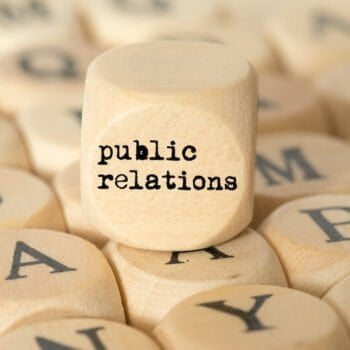Establishing a social media presence on LinkedIn
As a virtual resume and networking platform, LinkedIn is a great place for PR students to be found. Putting in the time and effort to establish a social media presence on LinkedIn is a worthy investment for your future as a PR professional.
Here are 10 rules from our team at Adoni Media to help you leverage LinkedIn as a PR student.
Upload an appropriate profile picture
According to LinkedIn, profiles with a picture get 14 times more views than those who don’t, as it’s the first thing employers see. When networking online, not having a photo on your LinkedIn profile is the equivalent to walking into an interview with a brown paper bag on your head. If you have a high-quality and professional profile photo, potential employers immediately find your online profile more personal and feel better connected to you.
Create a short but ‘punchy’ profile headline
LinkedIn headlines act as your professional ‘slogan’, which is the most important message you want those visiting your profile to see. Be succinct and avoid clichés and buzzwords which are generally overused. If you are stuck or need inspiration, check out the profiles of successful industry leaders you follow.
Write a straight-forward summary statement
Your summary statement is where you can really stand out from the crowd and tell your unique ‘story’. Talk about your experience, qualifications and aspirations. Be confident when you discuss your skills and what makes you unique, while being strategic. Mention key words recruiters will be looking for to enhance your employment prospects.

List all your work experience
List relevant experience in detail to demonstrate your capabilities. Experience is not just paid employment – it can be volunteering, internships or even university assessment using real-world clients. According to LinkedIn, 41 per cent of LinkedIn recruiters considered volunteer work on par with full time work experience.
Don’t be afraid to boast
If you feel as though you don’t have adequate experience, you may want to list any relevant achievements or skills you’ve worked hard to acquire, such as:
- Prizes and recognitions
- Completed classes
- Any spoken foreign languages
- Certifications
- Successful team projects at university
- Grades and GPA score.
Build a strong network
In the PR industry, it’s all about who you know. The bigger and broader the network, the greater the chance you may connect with someone who will help you in the future or introduce you to a potential employer. Take every opportunity to connect with industry leaders and professionals. If you attend a networking event, ask people you meet for their LinkedIn details. Be sure to personalise messages if you are sending requests to people you don’t know very well, otherwise you risk coming across as sending spam.
Search engine optimise yourself
Boost your chances of being seen first on Google by making your LinkedIn profile public. You can also go to settings and create your own unique URL to include your name. Be sure to put this link wherever possible such as on your bio, resume, social media platforms and even your email signature.
Show, don’t tell
Instead of describing the work you’ve done, show it instead. Upload or link to your real-world examples, such as blog articles, media releases, proposals, design portfolios, university assessment and group projects.
Add your skills and get them endorsed
Include any relevant skills you’ve acquired. You can browse job listings or profiles of other industry professionals to see what skills employers are looking for. After you’ve listed your skills, be sure to get people you know to endorse them to build your credibility. Take it a step further and ask colleagues or former employers to write you a recommendation.
Overload on content
LinkedIn is a fantastic platform to gain invaluable insight into the PR industry by keeping up to date with the latest news and industry developments. Follow well-known PR agencies and industry leaders who generally share their opinion, advice and experiences.


